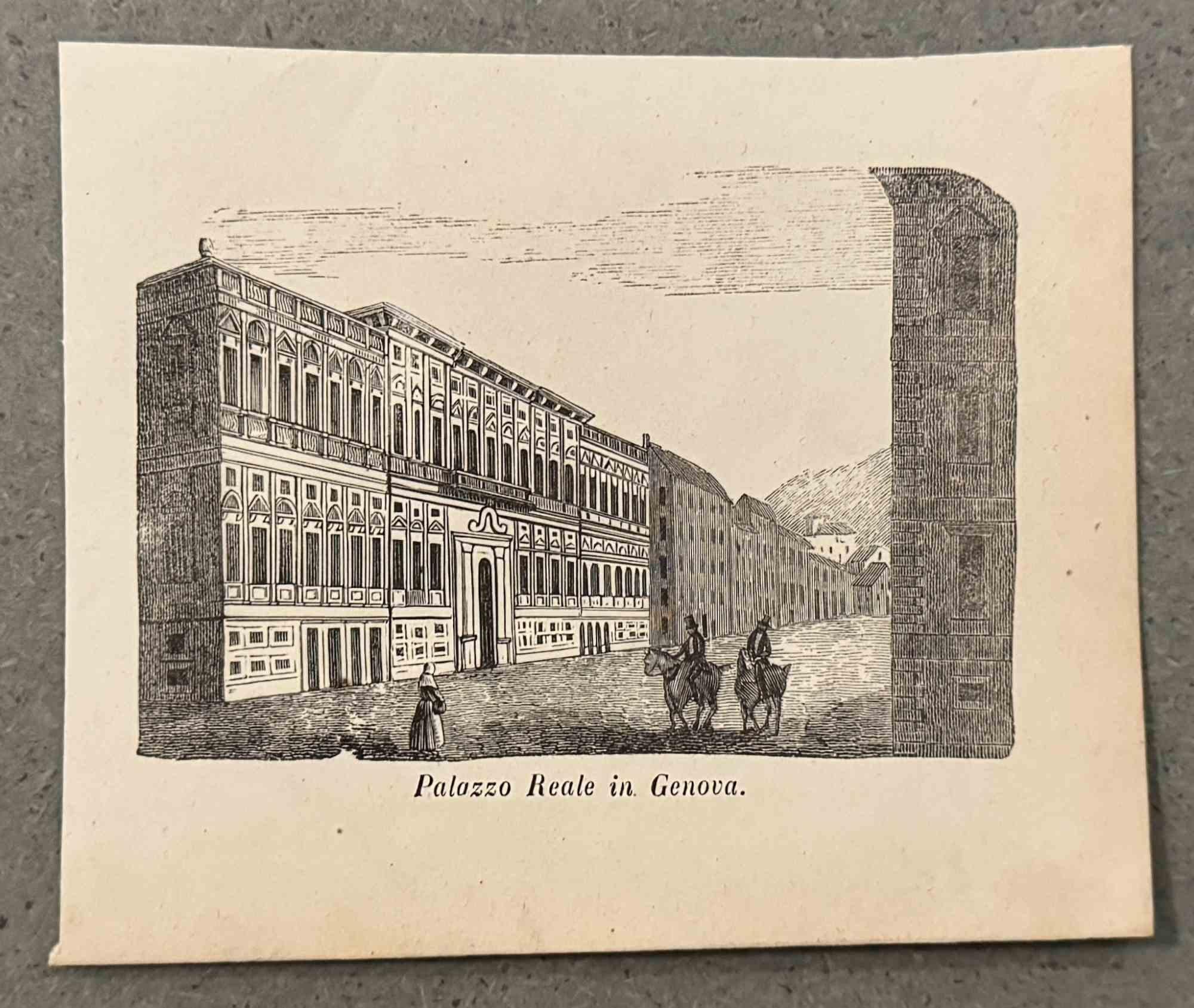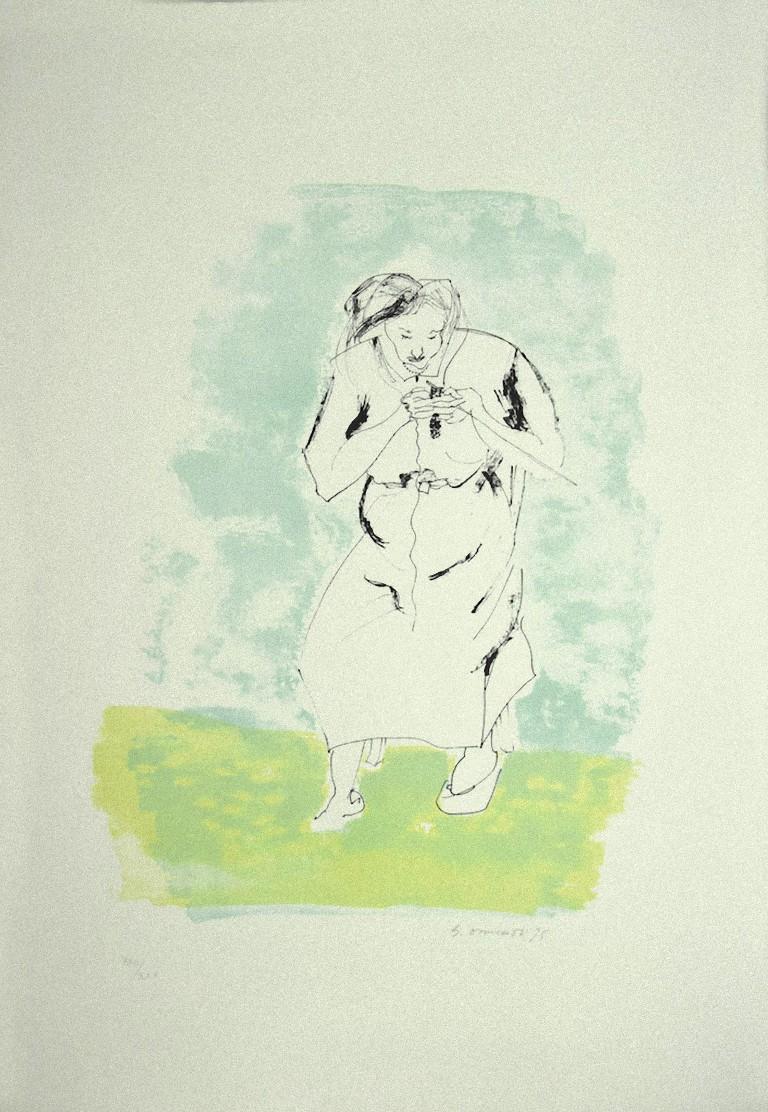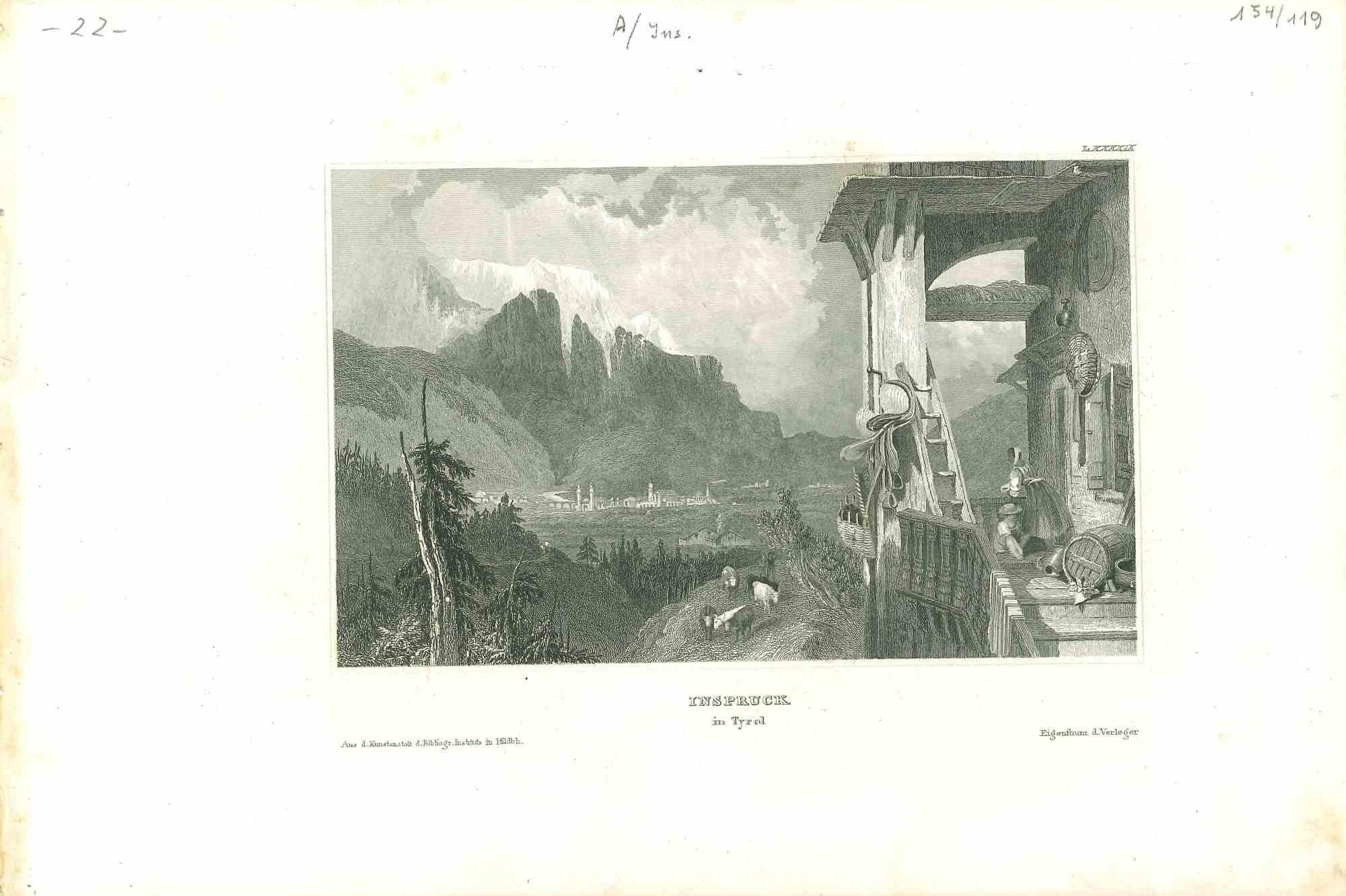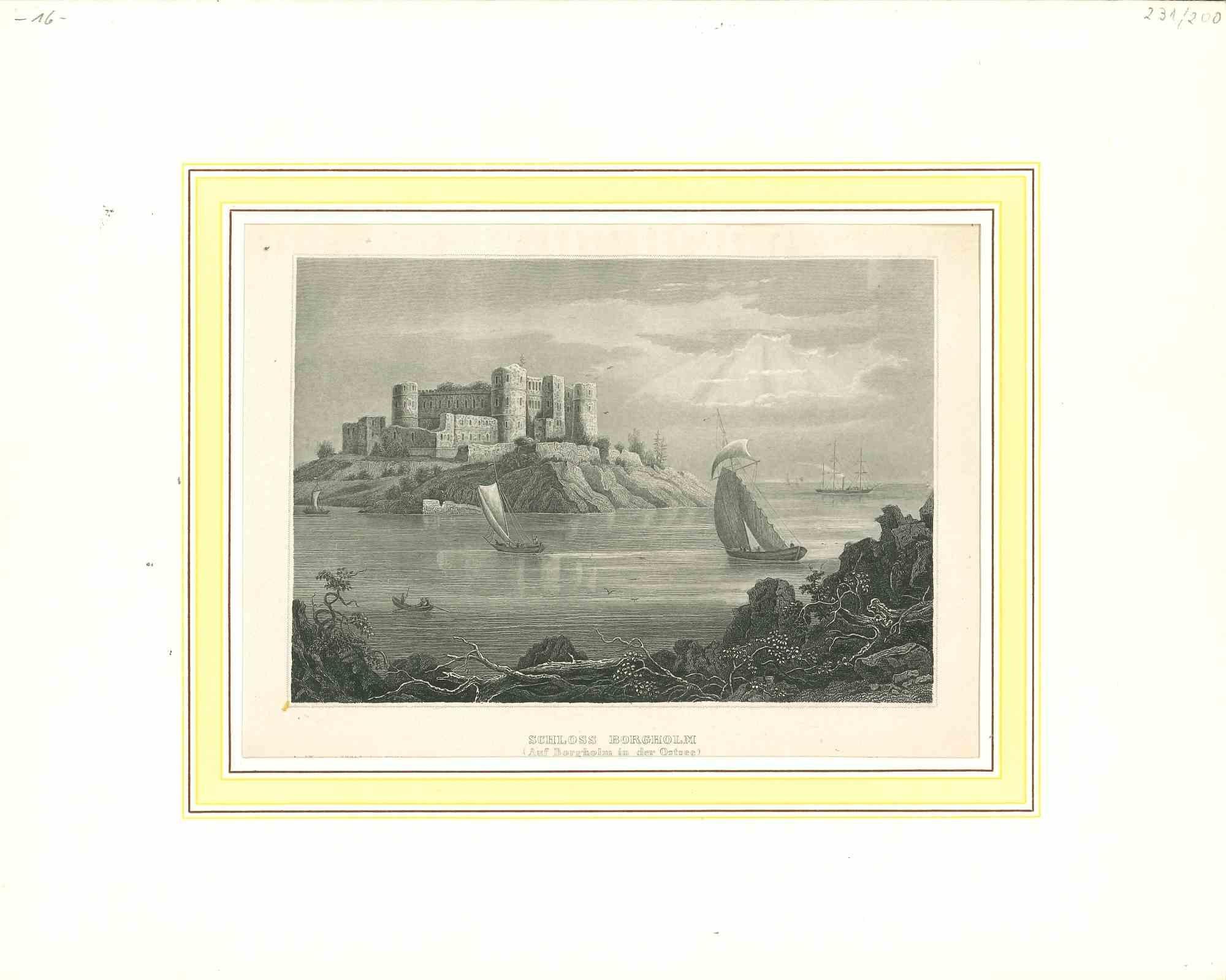Marc ChagallBataille de Fleurs (Carnaval of Flowers) from Nice and the Côte d’Azur1967
1967
About the Item
- Creator:Marc Chagall (1887 - 1985, French)
- Creation Year:1967
- Dimensions:Height: 34 in (86.36 cm)Width: 27 in (68.58 cm)
- Medium:
- Movement & Style:
- Period:
- Condition:
- Gallery Location:Missouri, MO
- Reference Number:1stDibs: LU747314453092
Marc Chagall
Described by art critic Robert Hughes as "the quintessential Jewish artist of the twentieth century," the Russian-French modernist Marc Chagall worked in nearly every artistic medium. Influenced by Symbolism, Fauvism, Cubism and Surrealism, he developed his own distinctive style, combining avant-garde techniques and motifs with elements drawn from Eastern European Jewish folk art.
Born Moishe Segal in 1887, in Belarus (then part of the Russian empire), Chagall is often celebrated for his figurative paintings, but he also produced stained-glass windows for the cathedrals of Reims and Metz, in France; for the United Nations, in New York; and for the Hadassah Hospital in Jerusalem, as well as book illustrations, stage sets, ceramics, tapestries and fine-art prints. Characterized by a bold color palette and whimsical imagery, his works are often narrative, depicting small-village scenes and quotidian moments of peasant life, as in his late painting The Flight into Egypt from 1980.
Before World War I, Chagall traveled between St. Petersburg, Paris and Berlin. When the conflict broke out, he returned to Soviet-occupied Belarus, where he founded the Vitebsk Arts College before leaving again for Paris in 1922. He fled to the United States during World War II but in 1947 returned to France, where he spent the rest of his life. His peripatetic career left its mark on his style, which was distinctly international, incorporating elements from each of the cultures he experienced.
Marc Chagall remains one of the past century’s most respected talents — find his art on 1stDibs.
- ShippingRetrieving quote...Ships From: Missouri, MO
- Return PolicyA return for this item may be initiated within 2 days of delivery.
- Cove at VintageBy LeRoy NeimanLocated in Missouri, MOCove at Vintage Leroy Neiman (American, 1921-2012) Signed in pencil lower right Edition 237/375 lower left 34 x 36.5 inches 43 x 45.5 inches with frame Known for his bright, colorfu...Category
20th Century American Modern Landscape Prints
MaterialsColor, Lithograph
- U.S. Open at OakmontBy LeRoy NeimanLocated in Missouri, MOU.S. Open at Oakmont Leroy Neiman (American, 1921-2012) Signed in pencil lower right Edition 63/300 lower left 27.5 x 39 inches 39.25 x 51 inches with frame Known for his bright, co...Category
20th Century American Modern Landscape Prints
MaterialsColor, Lithograph
- The 18th at Pebble BeachBy LeRoy NeimanLocated in Missouri, MOThe 18th at Pebble Beach Leroy Neiman (American, 1921-2012) Signed in pencil lower right Edition 176/400 lower left 26 x 43 inches 37.25 x 54.5 inches with frame Known for his brigh...Category
20th Century American Modern Landscape Prints
MaterialsColor, Lithograph
- Good Times on the Old PlantationBy Currier & IvesLocated in Missouri, MOCurrier & Ives (Publishers) "Good times on the Old Plantation" 1872 Handcolored Lithograph Size Height 10 in.; Width 13.9 in. Framed Size: approx 16 x 19.5Category
1870s Victorian Figurative Prints
MaterialsLithograph
- Canyon Road, Sante FeBy Will (William Howard) ShusterLocated in Missouri, MOCanyon Road, Santa Fe By. William Howard Shuster (American, 1893-1969) Signed Lower Right Edition of 100 Lower Center Titled Lower Left Unframed: 4" x 4.75" Framed: 15.75" x 15.25" ...Category
20th Century American Modern Landscape Prints
MaterialsEtching
- BostonBy John William HillLocated in Missouri, MOJohn William Hill (1812-1879) "Boston" 1857 Hand-Colored Engraving Site Size: 29 x 41 inches Framed Size: 39 x 52 inches Born in London, England, John William Hill came to America with his family at age 7. His father, John Hill, was a well-known landscape painter, engraver, and aquatintist. John William had a career of two phases, a city topographer-engraver and then, the leading pre-Rafaelite school painter in this country. Employed by the New York Geological Survey and then by Smith Brothers...Category
1850s Pre-Raphaelite Landscape Prints
MaterialsAquatint, Engraving
- Royal Palace in Genoa - Lithograph - 19th CenturyLocated in Roma, ITRoyal Palace in Genoa is a lithograph on paper realized in the 19th Century. The artwork is represented in a well-balanced composition with strong strokes. Very good condition.Category
19th Century Modern Figurative Prints
MaterialsLithograph
- The Woman - Original Lithograph by Giovanni Omiccioli - 1975By Giovanni OmiccioliLocated in Roma, ITThe Woman is an original lithograph realized by the Italian artist Giovanni Omiccioli (Rome, 1901-1975) in 1975. Hand-signed on the lower right. Edition XXIII/XXX In good conditio...Category
1970s Modern Figurative Prints
MaterialsLithograph
- Ancient View of Innsbruck - Original Lithograph on Paper - Mid-19th CenturyLocated in Roma, ITAncient View of Innsbruck is an original modern artwork realized in the first half of the 19th Century. Original B/W Lithograph on Ivory Paper. Inscripted on the lower margin: In...Category
1850s Modern Figurative Prints
MaterialsLithograph
- Ancient View of Chateau de Chronenbourg-Original Lithograph - Early 19th CenturyLocated in Roma, ITAncient View of Chateau de Chronenbourg is an original modern artwork realized in the first half of the 19th Century. Original Lithograph on Ivory Paper. Inscripted on the lower ...Category
Early 19th Century Modern Figurative Prints
MaterialsLithograph
- Ancient View of Der Gollynger Fall - Original Lithograph - Early 19th CenturyLocated in Roma, ITDer Gollynger Fall is an original modern artwork realized in the first half of the 19th Century. Original Lithograph on Ivory Paper. Inscripted on the lower margin: Der Gollynger...Category
Early 19th Century Modern Figurative Prints
MaterialsLithograph
- Ancient View of Schloss Borgholm - Original Lithograph - Early 19th CenturyLocated in Roma, ITAncient View of Schloss Borgholm is an original modern artwork realized in the first half of the 19th Century. Original Lithograph on Ivory Paper. Inscripted on the lower margin:...Category
Early 19th Century Modern Figurative Prints
MaterialsLithograph





